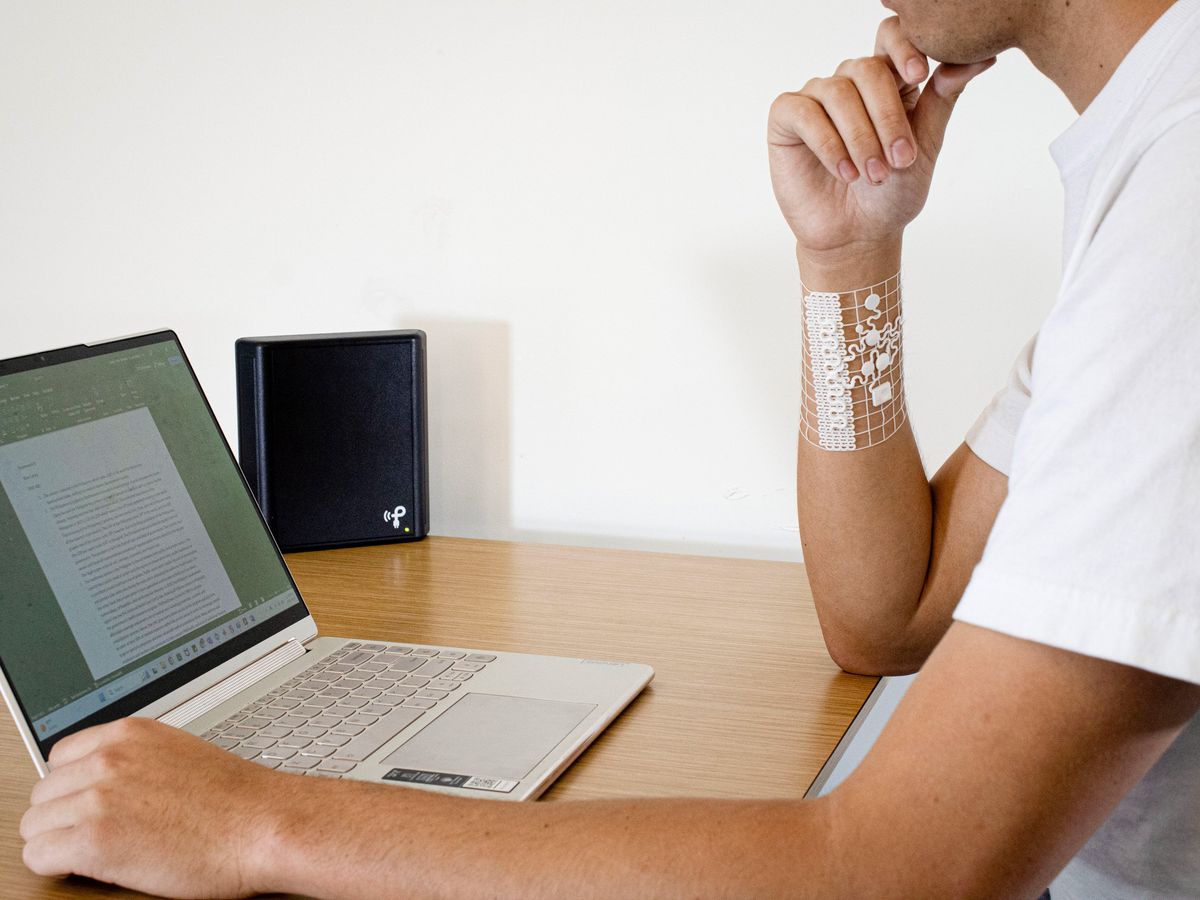As health care wearables for various medical conditions and situations proliferate, patients inevitably want their wearable tech as inconspicuous and worry free as possible. As a case in point, consider a new wearable mesh health monitor that does away with the “box and a strap” architecture that is still the industry’s de facto commercial design standard. This tech, developed by researchers at the University of Arizona, features long-range, low-power data transmission and receiving as well as wireless power charging. As a result of its portability, the device looks to be a compelling choice for remote health monitoring in isolated areas.
Philipp Gutruf, who directed the research, says his team is working to address the need for clinical-grade health monitors that are made “accessible in all kinds of areas on the globe [while] retaining the imperceptible nature of the device.” Gutruf is an assistant professor of biomedical engineering at the university.
“There is no large rigid island in this device. All the electronics are distributed in this mesh.”
—Philipp Gutruf, University of Arizona
The device measures heart rate and body temperature using a form-fitting, lattice-like mesh of thermoplastic polyurethane. The team 3D printed it, but Gutruf says other manufacturing methods can be used as well. Also part of the kit are a lightweight battery, a duplexing antenna that allows both data transmission and wireless power charging, and sensors, none more than 6 millimeters in diameter. About 15 centimeters long, the device is worn around a user’s forearm. Gutruf likens it to wearing a sock with the toe end cut off, except the mesh is extremely lightweight and comfortable to the point of being almost forgotten. He calls it “biosymbiotic.”
Design boosts the wearable’s wearability, its chief advocate says. “There is no large rigid island in this device,” Gutruf says. “All the electronics are distributed in this mesh.” It doesn’t rely on adhesives either, he says, but instead conforms to the user’s body. “That allows us to go well beyond the three to four days a patch can do,” Gutruf adds.
Blood-flow and blood-volume monitoring are furthermore available in the new technology via a technique called photoplethysmography (PPG).
Traditional PPG sensors, Gutruf says, have a small mass in it that measure acceleration. This tech, by contrast, uses its body-conforming profile to eliminate what he calls the traditional “brick” strapped to a PPG sensor. The device’s sensor, he says, “Is on a tiny node embedded in the mesh that conforms very well to your skin. So we can drop some of the filtering requirements, oversampling, additional accelerometer processing, and so on...because we have a very good signal to begin with.”
Better LoRa with LoRaWAN
In addition to the comfort factors, Gutruf says, the mesh design achieves a better operating efficiency than a typical commercial wearable. To improve transmission via small packets, the device does onboard computing of the raw sensor data. And it uses the long-range (LoRa) communications protocol, which the researchers demonstrated at 24 kilometers point-to-point in an isolated mountainous area.
“LoRa has kind of the best community already existing,” he says. “Yes, there are other technologies. But considering the already existing networks in the regions we made this device for, it was pretty much a no-brainer to pick LoRa.”
LoRa is one of the mainstay technologies in Internet of Things (IoT) deployments. Originally architected in 2009, the modulation technology is based on a wideband, chirped-pulse standard (chirp spread spectrum) that excels at transmitting small data packets—up to a theoretical maximum of 256 bytes, though that varies by region and application—at long range using little power.
LoRaWAN, the media access control (MAC) protocol that sits atop the LoRa physical layer, was developed and maintained by the LoRa Alliance beginning in 2015. The Internet Engineering Task Force (IETF) published RFC 9011, the standard specifying the use of Internet protocols with LoRaWAN, in 2021.
LoRaWAN is already well established in health care. Calgary, Canada–based Tektelic offers a remote monitoring device called eDOCTOR, which straps around the chest and monitors temperature, respiration, heart rate, body position, and chest expansion. Christian Ulrik, vice president of sales and business development at Tektelic, says the device is ideal for monitoring patients who have been recently discharged from the hospital. Recent U.S. government statistics show that 13.9 percent of all patients discharged from a hospital between 2016 and 2020 were readmitted within 30 days.
These LoRaWAN technologies plus a range of others, Gutruf says, provide hope for those the global health care system has otherwise been unable to treat adequately.
“The more technologies we make available, the more obvious it becomes for the medical community, and the easier it becomes for the medical community to do this,” he says. “The quicker we get acceptance of this, the better we can serve those who would usually have trouble getting quality health care.”
- Too Many Health Wearables and Apps Are Digital Snake Oil ›
- How Mobile Health Apps and Wearables Could Actually Make People Sicker ›



